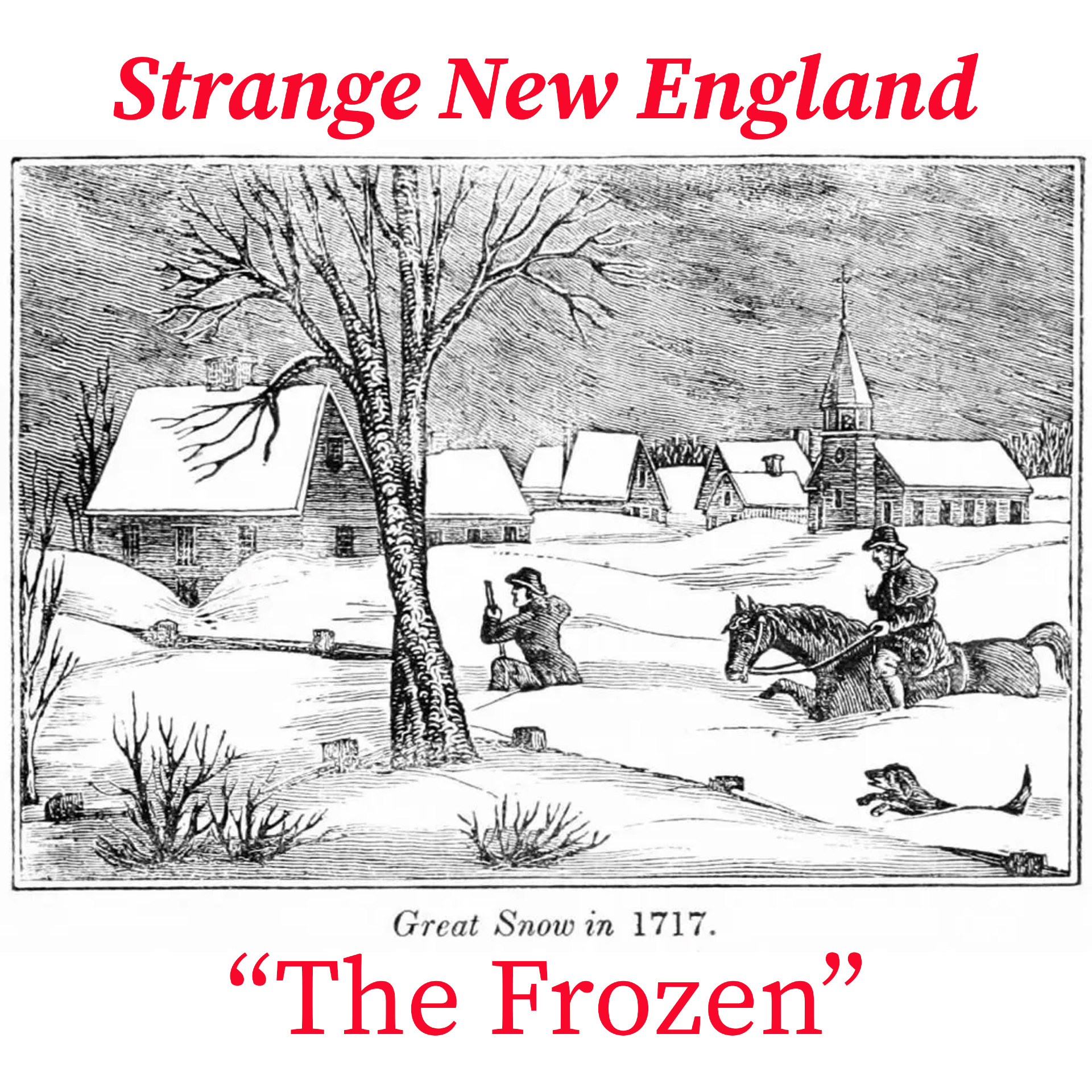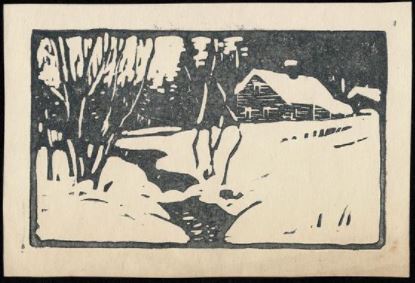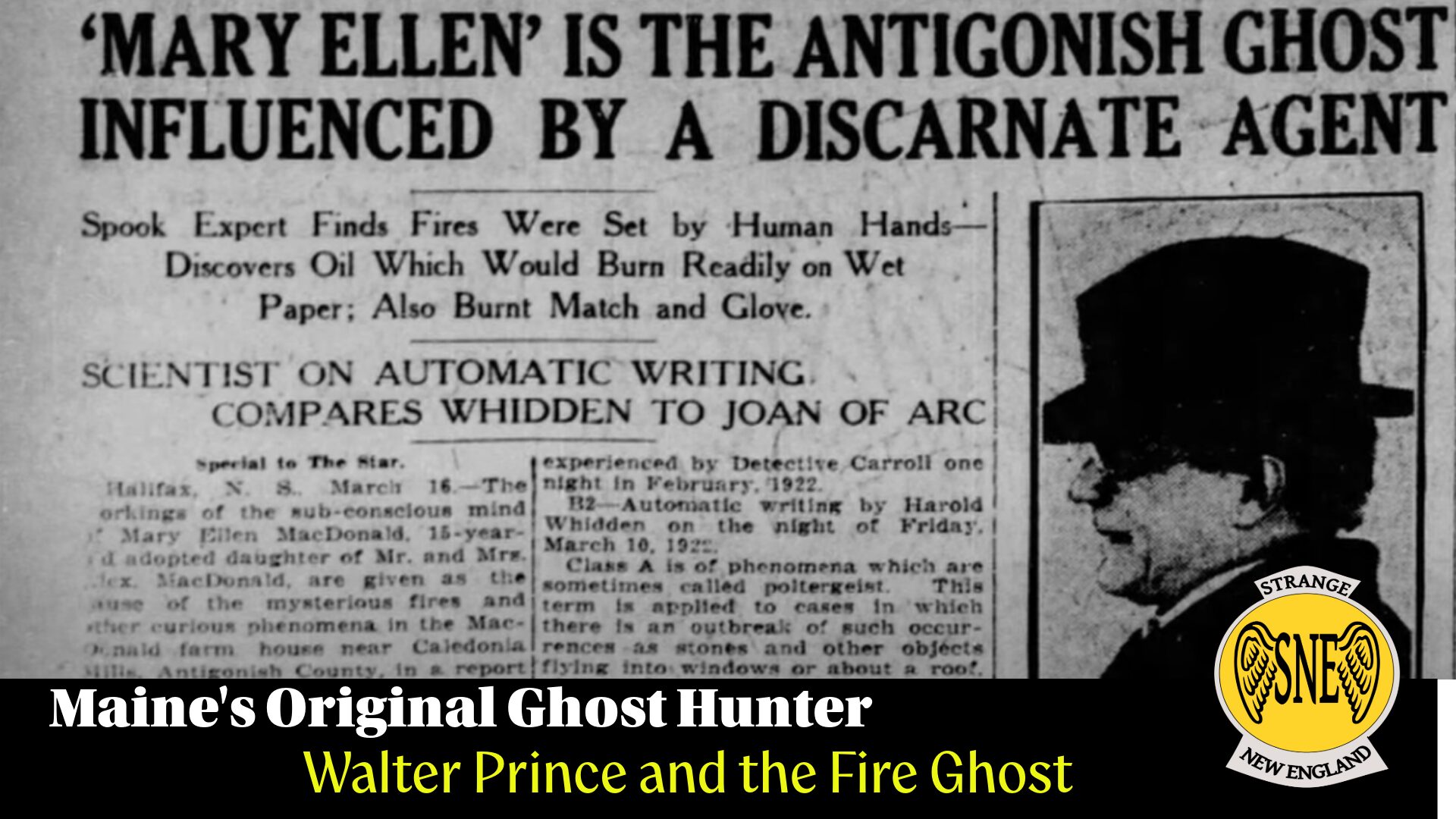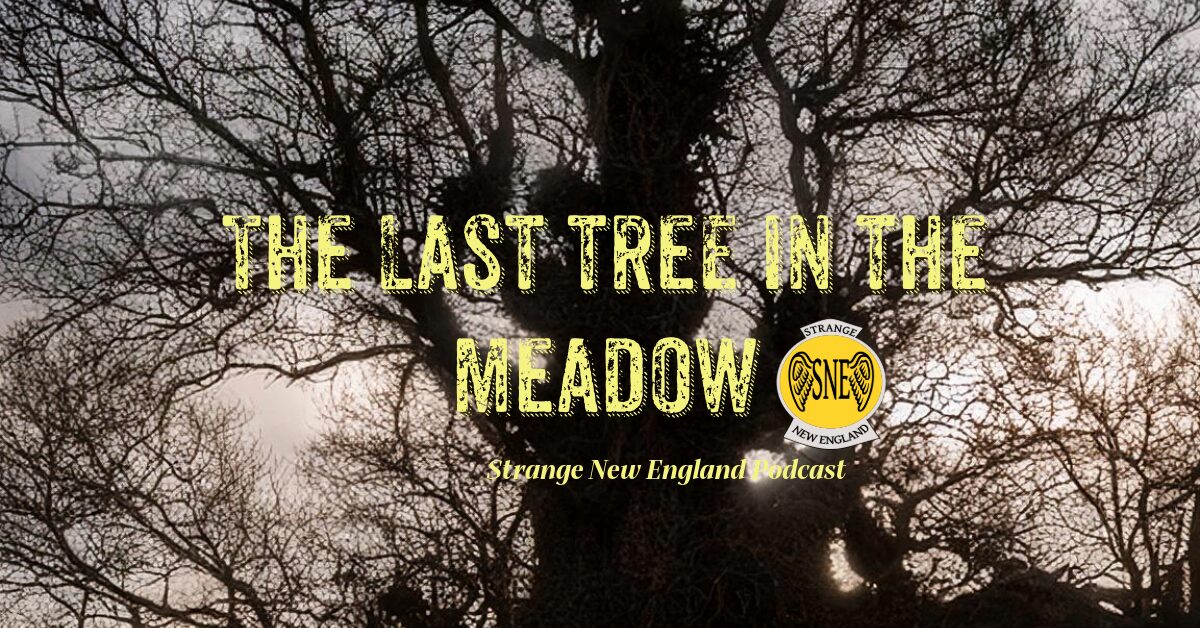
Elbert Stevens owned a sawmill in Bridgewater Corners, Vermont at the turn of the last century. His people had been in the area for time out of mind and he was known as a man who, like the bedrock that makes up the state, was solid, strong, and in a word, reliable. He was also a keeper of things, never one to discard anything that might be of use later, a habit practiced by many folks of his age and caliber. You never know when you might need something later – usually after you threw it out the year before. Such people kept things, just in case.
One of those possessions was a scrapbook, a place to glue the memorable tidbits of news and marginalia found in the papers and almanacs read during those long Vermont winter evenings when the wind howled outside the door like wolves. He hadn’t started the scrapbook – it had merely been handed down to him from a family member long gone, but he held it as something precious for within those pages was something incredible and truly fantastic, a tale told by lamplight on the darkest nights of year, when the cold seeped in from the bottom of the door and made you wonder – how cold is too cold? The thought of it was enough to keep him reading and rereading it over the years, especially on those long, cold winter nights and it set his mind wondering. Can such things be?
That relative had left Elbert a story clipped from a newspaper now long out of print and forgotten, prior to the American Civil War, in the 1830s. The paper’s name was not on the clipping. Fading to yellow, the old newsprint held the story recounted by an unnamed traveler who recalled a practice he had personally witnessed in the far hills of northern Vermont. Later, author Robert Wilson would write of this clipping in the pages of Yankee Magazine, first in April of 1940 and again in March of 1963. So we are several steps away from a primary source, but the idea is one so singularly strange that it bears retelling.
Elbert Stevens recalls, “I am an old man now and have seen some strange sights in the course of a roving life in foreign lands as well as in this country, but none so strange as the one I found recorded in an old diary kept by my Uncle William that came into my possession a few years ago at his decease.”
Elbert claims to have been to the location of the events described in the article, about twenty miles from Vermont’s capital, Montpelier. A log cabin on a mountainside still stood where the traveler claims this all took place. Elbert even claimed to have spoken with an old man about the events in the story and the old fellow claimed that his own father was one of those folk who spent the winter in a kind of frozen death, what scientists today might call ‘suspended animation.’
Scientists have long known about the ability of certain animals who can hibernate – slow down their natural processes to such a degree that they persist in a kind of torpor, a state of sleep so deep, they conserve energy and most efficiently use fat and water in their body so that they can stand the long, low temperatures of northern climates. Bears, turtles, snakes, groundhogs, bats, even bumblebees all possess the ability to enter this state, known to scientists as heterothermy. As the core body temperature drops below 95 degrees, the metabolic rate decreases, the heart beats slowly, respiration slows, as well. The body temperature of these creatures lowers, as well, and fat deposits are called upon to feed the furnace of the body instead of ingesting food. Certainly old-timers who had to hunt to bring home fresh meat in the winter, would have been aware that some creatures effectively disappeared in the winter. Where did they go? But the idea that humans might be able to hibernate seems against all prior knowledge and reason. But what of hypothermia, the slow freezing deathlike state that comes before the final heartbeat of those humans who are exposed to winter’s fury? The cells in the body begin to freeze at 31.1 degrees, and cell walls rupture as the water within them freezes, crystallizes and bursts through cell walls, resulting in frostbite. Freezing to death comes on like a shiver but ends with the body becoming warm and comfortable as the blood abandons extremities and concentrates around internal organs, resulting in a quiet, almost blissful sleep-state, followed by death.
Some people have been able to last for hours and slowly be brought back from the brink of life with slow and deliberate coaxing of the temperature and the metabolism until the victims awaken and recover. Surgeons use something called therapeutic hypothermia after cardiac arrest, a state where the heart stops beating and blood is no longer going to the brain or other organs as it should. By lowering the body’s temperature, the damage done to the brain and other organs is lessened. They use this technique on people whose hearts have stopped, then restarted but who have not reawakened. Cooling them to very cold levels for 24 hours improves their chances of awakening and recovering.
We know a lot about how the human body responds to the cold and we’re learning more. If the body’s core temperature can be lowered and maintained with no long-term damage to cells or organs, such techniques might one day help humans travel the vast distances involved in space travel. To conserve food and the energy to warm these future astronauts, putting them in a state of suspended animation would solve many of the problems with long-term deep space flight. But we don’t know how to do such a thing, not yet. We are doing the research, but such functional practices are still the stuff of science fiction.
What, then, do we make of this anonymous traveler’s story told so long ago? You be the judge. Perhaps the good people of northern Vermont knew something we have yet to prove, yet to comprehend.
Here are his words:
“The account runs in this wise. January 7 – I went on the mountain today and witnessed what to me was a horrible sight. It seems that the dwellers there who are unable either from age or other reasons to contribute to the support of their families are disposed of in the winter months in a manner that will shock the one who reads this diary unless that person lives in the vicinity.
“I will describe what I saw. Six persons, four men and two women, the man a cripple about 30 years old, the other five past the age of usefulness, lay on the earthly floor of the cabin drugged into insensibility, while members of the families were gathered about them in apparent indifference. In a short time the unconscious bodies were inspected by several old people who said, ‘They are ready.’
“They were then stripped of all their clothing except a single garment. Then the bodies were carried outside and laid on logs exposed to the bitter cold mountain air, the operation having been delayed several days for suitable weather.
“It was a night when the bodies were carried out and the full moon occasionally obscured by flying clouds, shone on their upturned, ghastly faces and a horrible fascination kept me by the bodies as long as I could endure the severe cold.
“Soon the noses, ears, and fingers began to turn white, then the limbs and faces assumed a tallowy look. I could stand the cold no longer and went inside, where I found the friends in cheerful conversation. In about an hour I went out and looked at the bodies. They were fast freezing.
“Again I went inside where the men were smoking their clay pipes but silence had fallen on them. Perhaps they were thinking of the time when their time would come to be carried out, for in the same way, one by one, they at last lay down on the floor and went to sleep.
“I could not shut out the sight of their freezing bodies outside, neither could I bear to be in darkness, but I piled on wood in the cavernous fireplace and seated on a shingle block passed the dreary night, terror stricken by the horrible sights I had witnessed.
“January 8 – Day came at length but did not dissipate the terror that filled me. The frozen bodies became visibly white on the snow that lay in huge drifts about them. The women gathered about the fire and soon commenced preparing breakfast. The men awoke, and conversation again commencing, affair assumed a more cheerful aspect.
“After breakfast the men lit their pipes and some of them took a yoke of oxen and went off toward the forest, while others proceeded to nail together boards making a box about 10 feet long and half as high and wide. When this was completed they placed about two feet of straw on the bottom. Then they laid three frozen bodies in the straw. Then the faces and upper part of the bodies were covered with cloth; then more straw was put in the box and the other three bodies placed on top, and covered the same as the first ones, with cloth and straw.
“Boards were then firmly nailed on top to protect the bodies from being injured by carnivorous animals that made their home on these mountains. By this time the men who went off with the ox team returned with a huge load of spruce and hemlock boughs which they unloaded at the foot of a steep ledge, came to the house and loaded the box containing the bodies on the sled and drew it to the foot of the ledge near the boughs.
“These were soon piled on and around the box and it was left to be covered with snow which I was told would lay in drifts 20 feet deep over this rude tomb. ‘We shall want our men to plant our corn next Spring,’ said a youngish-looking woman, the wife of one of the frozen men, ‘and if you want to see them resuscitated, you come here about the 10th of next May.’”
Musical Interlude
In America alone, over three hundred human beings have been frozen in cryogenic facilities with the hope that at some future date, these people – usually only their heads or brains, for the bodies are never frozen – all have one thing in common: they were all dead when they were put into a frozen state. Cryoprotective agents have been injected, but this biological antifreeze has toxic effects at the cellular level. At the molecular level, so much damage will have been done that only something like some kind of advanced nanotechnology will be able to affect repairs, along with an artificial intelligence capable of monitoring every single cell in a biological system.
Who knows if consciousness will ever return to these brains? At the moment, it seems impossible. But the hope is that the future will offer scientific advances sufficient to bring the dead back to life. That’s the hope, and hope is often all that is left when every other avenue has been exhausted. Will we ever bring the frozen dead of our modern scientific world back to life? It is doubtful, but perhaps not impossible.
But what of the frozen folk in northern Vermont, buried in a box with tree boughs and straw? How does the unnamed traveler end his tale? He continues…
“May 10 – I arrived here at 10 A.M. after riding about four hours over muddy, unsettled roads. The weather here is warm and pleasant, most of the snow gone except here and there there are drifts in the fence corners and hollows. But nature is not yet dressed in green.
“We repaired at once to the well-remembered spot at the ledge. The snow had melted from the top of the brush, but still lay deep around the bottom of the pile. The men commenced work at once, some shoveling, and others tearing away the brush. Soon the box was visible. The cover was taken off, the layers of straw removed and the bodies, frozen and apparently lifeless, lifted out and laid on the snow.
“I found the same prairies here I left last January ready to disinter the bodies of their friends. I had no expectations of finding any life there, but a feeling that I could not resist impelled me to come and see.
Large troughs made out of hemlock logs were placed nearby filled with tepid water, into which the bodies were placed separately with the head slightly raised. Boiling water was then poured into the troughs from kettles hung on poles nearby until the water was as hot as I could hold my hand in. Hemlock boughs had been put in the boiling water in such quantities that they had given the water the color of wine.
“After lying in the bath for about an hour, color began to return to the bodies, when all hands began rubbing and chafing them. This continued about an hour when a slight twitching of the muscles of the face and limbs, followed by audible gasps showed that life was not quenched and that vitality was returning.
“Spirits were then given in small quantities and allowed to trickle down their throats. Soon they could swallow and more was given them when their eyes opened and they began to talk, and finally sat up in their bathtubs.
“They were taken out and assisted to the house where after a hearty meal they seemed as well as ever and in nowise injured, but rather refreshed by their long sleep of four months.”
Can such things be true? There is no real proof that this story is anything more than that – just a story. But what a story! If one suspends disbelief and considers the story as factual, one wonders – how many times have these people been put into the frozen suspended state? One year, several years? Did some fail to resuscitate? How was such a process discovered in the first place? If this was a real process, surely it is fantastical and audacious enough to be recalled by anyone who knew of its existence. But all we have is one unnamed traveler’s account.
Still, even if it is just a story, put yourself in a small parlor with the fire burning against the awesome cold of a northern New England deep winter night, the family huddled together before bedtime and mother or father pulling out the old scrapbook. You’ve heard the story before, but it never fails to make you wonder – and shiver a little more from the story than from the cold. As the story is read, you look outside the window at the vault of stars twinkling overhead and see in the distance, against a ledge, a pile of boughs covered with snow. You cannot help but wonder what lies beneath.
You’ve been listening to Strange New England
Original theme music composed and performed by Jim Burby
Additional music by Myuu (that’s MYUU) – check his work out on Youtube and Soundcloud.
Audio mastering by Jim Burby
We invite you to keep listening to the other podcasts in our catalog and be ready for 11 new episodes coming at you each week this summer. Until next time, pay attention to the things you see from the corner of your eye…






